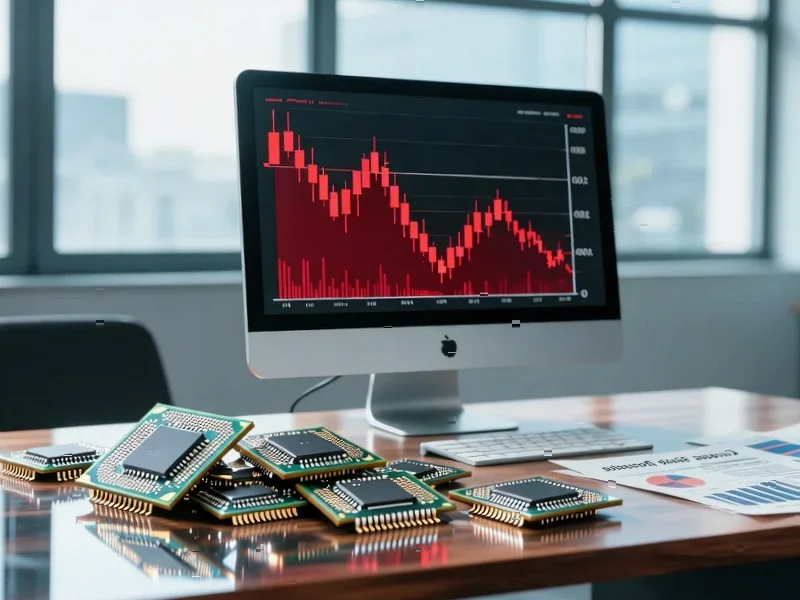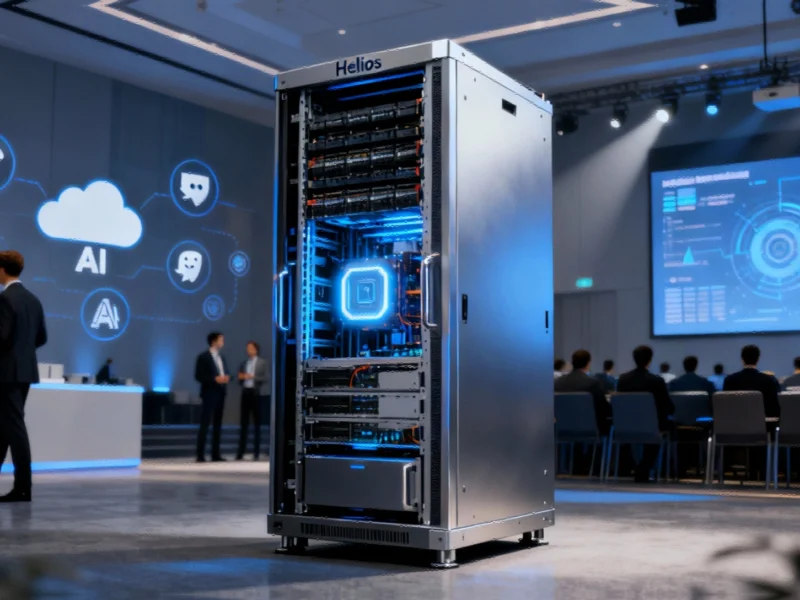According to Bloomberg Business, Asian stocks were positioned for gains Tuesday following Wall Street’s advance, driven by Amazon.com Inc.’s $38 billion deal with OpenAI that reignited enthusiasm for artificial-intelligence shares. Equity-index futures indicated gains in Japan, where traders returned from a long weekend, and South Korea, while the S&P 500 and Nasdaq 100 climbed with megacap strength lifting a gauge of the “Magnificent Seven” by 1.2%. The Nasdaq Golden Dragon China Index also rose alongside Treasury yield advances and dollar gains. This market movement signals how major AI partnerships are reshaping global investment patterns.
The Cloud Computing Arms Race Intensifies
Amazon’s massive commitment to OpenAI represents more than just an investment—it’s a defensive maneuver in the escalating cloud computing war. With Microsoft’s exclusive partnership with OpenAI giving Azure significant competitive advantage, Amazon Web Services needed to secure its own high-profile AI alliance. The $38 billion figure likely encompasses both direct investment and long-term cloud infrastructure commitments, creating a powerful incentive for OpenAI to diversify beyond Microsoft’s ecosystem while ensuring AWS remains competitive in the rapidly evolving AI infrastructure market.
Why Global Markets Are Reacting
The immediate market reaction across Asian and US indices reveals how deeply AI has become embedded in global growth expectations. When a deal of this magnitude occurs, it creates a halo effect across the entire technology sector, validating AI as a sustainable investment theme rather than a passing trend. The 1.2% gain in the Magnificent Seven index specifically indicates that investors see this as strengthening the entire megacap tech ecosystem, not just Amazon. More importantly, it signals that AI infrastructure spending is entering a new phase where partnerships and ecosystem development matter as much as proprietary technology.
Following the Money Trail
From a financial perspective, this deal creates multiple revenue streams and valuation catalysts. For Amazon, it secures a major anchor tenant for AWS while potentially giving them equity in one of the most valuable private AI companies. For OpenAI, it provides the computational resources needed to scale while maintaining negotiating leverage with multiple cloud providers. The market’s positive reaction suggests investors believe this partnership will accelerate AI adoption across enterprises, creating downstream opportunities for semiconductor manufacturers, data infrastructure providers, and application developers who build on these platforms.
Shifting Power Dynamics in AI
This development fundamentally alters the competitive landscape beyond just Amazon versus Microsoft. It creates a more fragmented AI infrastructure market where leading models can leverage multiple cloud providers, reducing single-vendor dependency. For enterprises, this means more negotiating power and flexibility in their AI deployments. However, it also raises questions about how these partnerships will affect AWS’s broader customer relationships, particularly with companies competing directly with OpenAI’s applications. The deal may force other cloud providers like Google Cloud and Oracle to pursue similar high-profile AI partnerships to remain competitive.
Long-Term Investment Implications
Looking forward, this partnership signals that we’re entering the infrastructure deployment phase of AI development. The initial research and model development stage is giving way to massive scaling requirements, which benefits cloud providers, semiconductor companies, and infrastructure specialists. For investors, the key takeaway is that AI value creation is becoming more distributed—while model developers capture attention, the infrastructure providers may ultimately capture more sustainable revenue streams. This could lead to renewed interest in data center REITs, power infrastructure companies, and semiconductor equipment manufacturers as the physical requirements of AI scaling become more apparent.




